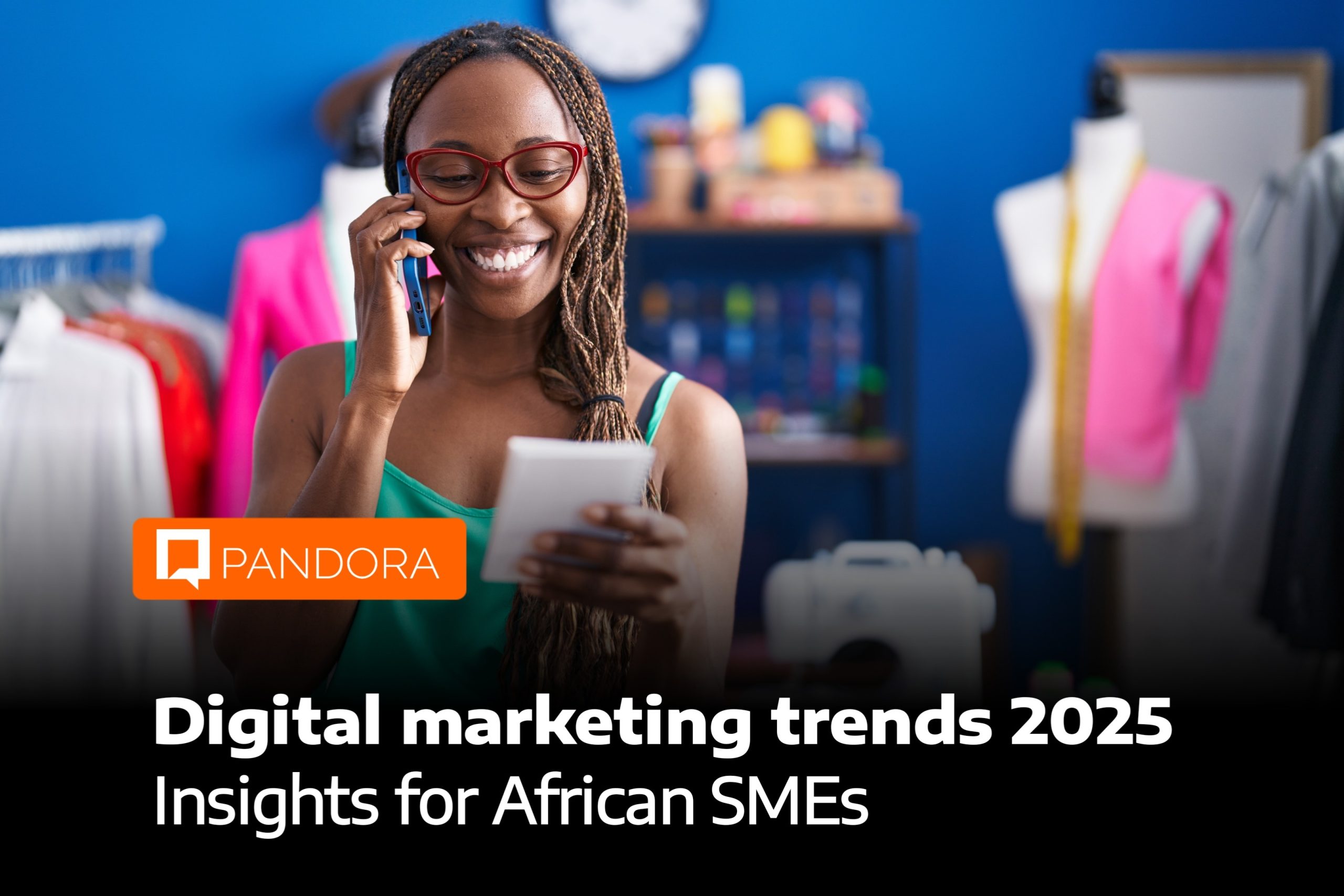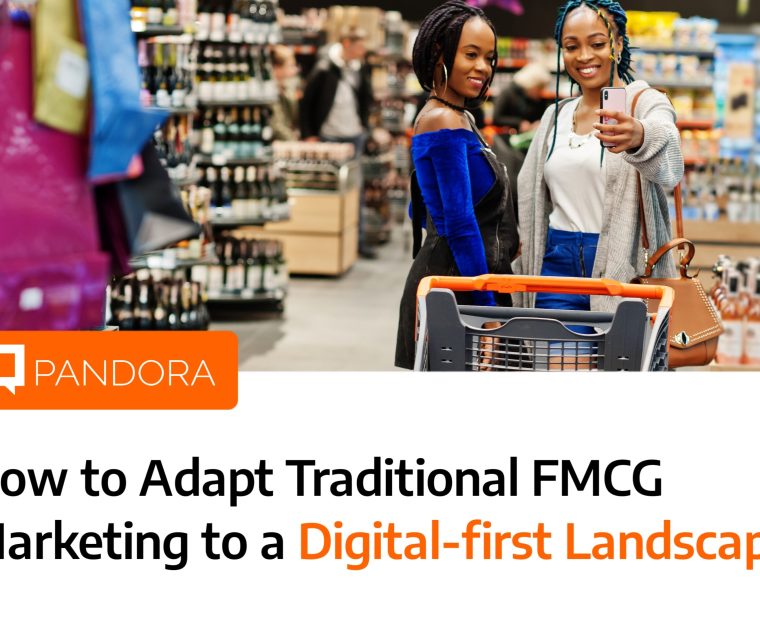Digital marketing is transforming and reshaping SMEs around the world. It offers cost-effective strategies to build brand awareness, enhance reach, build trust, and make data-driven decisions. This has led to the ability to compete with larger competitors. Due to the shift, traditional marketing (usually quite expensive for SMEs) has become a secondary option.
Harnessing digital trends and transformations can enable African SMEs to survive and thrive despite some harsh economic environment. This is where they can leverage digital marketing trends that are helping other SMEs across the globe.
Digital Marketing Trends That African SMEs Should Leverage
When digital marketing trends are mentioned anywhere, Artificial intelligence, mobile-first, and influencer marketing quickly come to mind.
While these are crucial trends shaping the industry (which is why we fully discussed them in a recent article published here), there are other useful trends SMEs can leverage to thrive.
We’ve seen these trends work in many Asian countries like China and India and believe that African SMEs can gain some insights to scale their businesses effectively. Let’s take a look at these trends below.
1. Ecommerce and Social Commerce Mastery
Knowledge plays a crucial role in making the best of digital marketing. In a recent interview with Pandora Agency Limited’s principal officer, Kehinde Ruth Onasoga, she pointed out that lack of knowledge and the patience to learn is one of the challenges affecting African markets.
I believe that e-commerce and social commerce mastery is a trend Asian SMEs have mastered, and African SMEs can do so as well.
Businesses in China and similar countries integrate e-commerce platforms like Shopee, Lazada, and WeChat Mini-Programs with social commerce on platforms like TikTok Shop and WhatsApp Business.
These localised platforms have been effective in driving business activities and sales. African SMEs can increasingly embrace local marketplaces like Jumia and Konga, leveraging WhatsApp, Facebook Marketplace, and Instagram Shops for direct sales.
2. Hyperlocal Marketing with Digital Tools
This is another digital marketing trend that African SMEs can leverage for growth. Many Asian SMEs use AI-powered location-based marketing via Google My Business, Baidu Maps, and localised SEO to target nearby customers effectively.
African SMEs can leverage these trends to optimise Google My Business listings, use location-based Facebook and Instagram ads, and engage with community-based WhatsApp and Telegram groups.
While optimising for search engines still works for businesses, targeting localised platforms where buyers spend their time yields more results.
3. Livestream and Video Commerce
I love what the Chinese, for instance, do with platforms like TikTok and Shopee Live, where they showcase products in real time, leading to immediate sales. Most of these live streams focus on enhancing business performance and use edutainment that focuses on the business goal.
SMEs in Africa in fashion and apparel, beauty and skincare, handmade craft, and tech & gadget retail can experiment with live selling on TikTok, Instagram Live, or Facebook to drive engagement and instant conversations.
Creating awareness of these events is crucial to attracting the right audience. To boost reach, they can partner with other businesses to execute collaborative live-streaming events.
4. Mobile-First and Super Apps Integration
One major advantage Asian SMEs have is their mobile-first approach to digital marketing. Countries like China, India, and Indonesia have a high percentage of mobile users, making mobile apps and super apps such as Grab, Gojek, and WeChat essential for customer engagement. These apps integrate e-commerce, payments, ride-hailing, and delivery services in a single platform.
African SMEs can follow suit by leveraging mobile-friendly e-commerce platforms like Flutterwave Store and Paystack Storefront. They need to start promoting these platforms and utilise them more because if they don’t promote their own businesses and platforms, no one will do that for them.
Using WhatsApp Business for marketing, customer service, and sales can also significantly boost engagement and transactions. Investing in mobile-responsive websites and mobile apps tailored to African consumers will also enhance user experience and drive sales.
5. AI and Chatbots for Customer Engagement
The use of AI-powered chatbots is revolutionising customer engagement in Asia. Many SMEs automate their customer service using AI chatbots on platforms like WhatsApp, WeChat, and Facebook Messenger to handle enquiries, process orders, and provide personalised recommendations 24/7.
African SMEs can implement similar strategies using platforms like Chatfuel, Tidio, or Facebook Messenger bots. In addition, voice search optimisation can be crucial, especially in markets where digital literacy varies and users rely on voice search for their queries.
6. Influencer & Nano-Influencer Marketing
Asian SMEs have mastered the art of micro- and nano-influencer marketing, using small but highly engaged content creators to drive sales. Unlike big influencers, these individuals have a close-knit community, making their recommendations more trusted.
African SMEs can tap into their local micro-influencers (with 1K–10K followers) on Instagram, TikTok, and Twitter. This benefits fashion brands, food businesses, fitness coaches, and online courses targeting specific niches.
Brands like Nuban Beauty and Roving Heights can collaborate with relevant micro-influencers to gain credibility and drive sales.
7. Data-Driven Marketing and Automation
Most Asian SMEs make data-driven decisions by leveraging analytics tools like Google Analytics, Facebook Pixel, and AI-powered CRM platforms.
They analyse customer behaviors, automate retargeting campaigns, and personalise customer interactions through email marketing sequences.
African SMEs can also invest in tools like HubSpot, Zoho, or ActiveCampaign to track customer behaviours, send personalised email campaigns, and retarget ads on social media for higher conversion rates.
8. Community-First Digital Branding
Asian SMEs prioritise community-driven marketing, especially by engaging deeply with customers through localised content and community-focused campaigns.
A good example is Shopee’s interactive features that allow sellers to engage directly with their audience. African SMEs can mirror this by building engaged online communities via WhatsApp, Facebook Groups, and Telegram, where they provide value before pitching their products.
Encouraging user-generated content, conducting Q&A sessions, and using interactive polls or challenges effectively keep audiences engaged.
8. Cross-Border Expansion via Digital Channels
Asian SMEs don’t limit themselves to local markets – they take advantage of digital platforms like Alibaba and TikTok Shop to reach a global audience.
African SMEs can do the same by exploring platforms like Jumia Global, selling on Amazon’s Africa-friendly markets, or tapping into the African diaspora through targeted social media advertising.
Small businesses in sectors such as fashion, beauty, and handcrafted goods can leverage these platforms to scale beyond their local markets and access a global customer base.
By applying these innovative digital marketing trends, African SMEs can bridge the gap, enhance their digital presence, and expand their businesses beyond borders. If you’re an SME owner, which strategies would you be keen to try first? Let’s discuss how to make it work for your business!






Leave a Reply